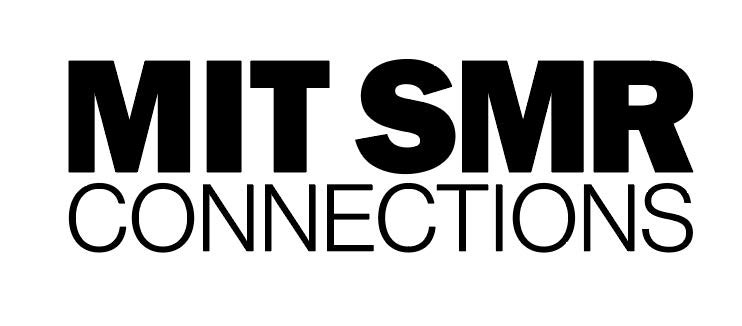Much is written about how to be a great manager to full-time remote teams. What gets talked about less—but is arguably just as important—is how to be a great manager to remote contractors, the people who don’t live and breathe your company day to day.
In case you haven’t heard, freelance work isn’t going away anytime soon…likely never. A 2021 report by Upwork found that 35% of the U.S. workforce are non-temporary freelancers (i.e., they plan to stay that way)—and another 56% of non-freelancers say they’re considering quitting their jobs to freelance in the future. In other words, if you’re not already working with contractors, you likely will be soon.
Freelance, part-time, and contract work is an integral part of how my co-founder and I have grown our company. It gives us access to incredible talent without requiring the same financial commitment as full-time employees. But just like with any working relationship, you need an environment in which they’ll thrive. Here are a few things that help me do big things with contractors.
1. Keep communication direct and focused
As a manager of full-time employees, I always communicate why I’m assigning tasks, so they feel like they’re working on something bigger: either tying it back to the company mission, sharing how it supports product strategy, or relating it to an employee’s professional goals. When I first started working with freelancers, I had the same approach, but I quickly realized my broad-strokes answers were making things more complicated than need be.
Contractors have different motivations than full-time employees. They generally trust their work will contribute to company goals but are more concerned with getting the job done as effectively and efficiently as possible.
So, in most cases there’s no need to bolster your briefs waxing poetic about vision or strategy. If your goal is getting a new website up ASAP, just say so. Share the bigger picture when it’s helpful context for someone to do their job well, but otherwise stay focused on precisely what you’re looking to get out of this assignment.
2. Work as asynchronously as possible
We’ve already been moving our full-time team toward more asynchronous work by introducing flexible work windows, and it’s led to better productivity for everyone. With freelancers, it’s even more important to avoid tying them down to a specific work schedule.
For one, scheduling is part of the legal distinction between employees and independent contractors—telling people when they must work smells of an employee-employer relationship. Staying flexible also makes you a better client to work with. A work-when-you-want schedule is a big benefit of the freelance gig, and by doing everything you can to support that, you’re likely to keep good contractors around.
Plus, your freelancers may be working from all over the world, which makes finding meeting times challenging. Alleviate this by moving as much communication as possible to asynchronous channels like messaging, comments on co-editing apps like Google Docs, or at very least, email. It can also be valuable to ask contractors about their standard time zone and working hours, so you can create reasonable asks for deliverables and have a sense of good times for meetings if you need them.
Furthermore, by allowing asynchronous work, therefore enabling contractors from all time zones around the world, you’re opening your business up to a virtually limitless talent pool regarding cultural diversity and skills.
3. Bring them into your collaboration tools
Any smart remote team uses collaboration tools to help them work effectively while apart. We’ve found that using GitHub and JIRA as a knowledge base and project management tool has significantly improved the productivity of our full-time team, allowing everyone to communicate and access information easily. And, obviously, there’s collaboration platforms like Webex by Cisco that make it easy for to businesses to collaborate and meet with their contractors around the world at any time.
But many companies implement these tools and then keep the freelancers who are trying to collaborate with them locked out—which is a big mistake! It creates redundant work, forcing you to re-communicate information that already exists elsewhere. Giving access to your knowledge base can make contractors more autonomous—when they can find information they need they won’t have to come to you with every question they might have.
No, you may not want to share all your documents with contractors, but most of these tools allow you to limit content access to certain groups. By letting your freelancers into the documents and conversations related to the projects they’re doing, you help them do a better job at helping you. Just make sure the collaboration platforms and apps you use support easy external sharing and access management while protecting information from exfiltration or theft.
4. Share the impact they’re making—privately and publicly
A great way to motivate the folks working for you, whether full-time or freelance, is to share the impact they’re making. Sure, this isn’t a required part of a contract relationship—again, getting paid on time for interesting projects is often motivation enough—but it sure makes people feel great when they know their work is appreciated.
This can be as simple as an email letting someone know about the impact their project had on your business numbers, or something nice a teammate said about their work. Better yet, if there are places to share this feedback publicly—such as through reviews on Upwork and Fiverr or a recommendation on LinkedIn—do so. This builds positive rapport with your freelancers and makes it more likely they’ll be thrilled to work together if you have another project down the line. Plus, other potential contractors will see your public, positive feedback and identify you as a business they want to work with.
Many companies have worked with remote contractors long before the pandemic. But the work landscape has changed significantly in the last few of years. Contractors, freelancers, and businesses have different expectations and needs. And the way we work continues to evolve. So, even if you’re used to remote work practices for full-time teams, it’s a good time to level up how you collaborate with freelance talent, too. Freelancers are here to stay. Make sure they’re happy to stay working with you, providing tremendous value for your organization.





